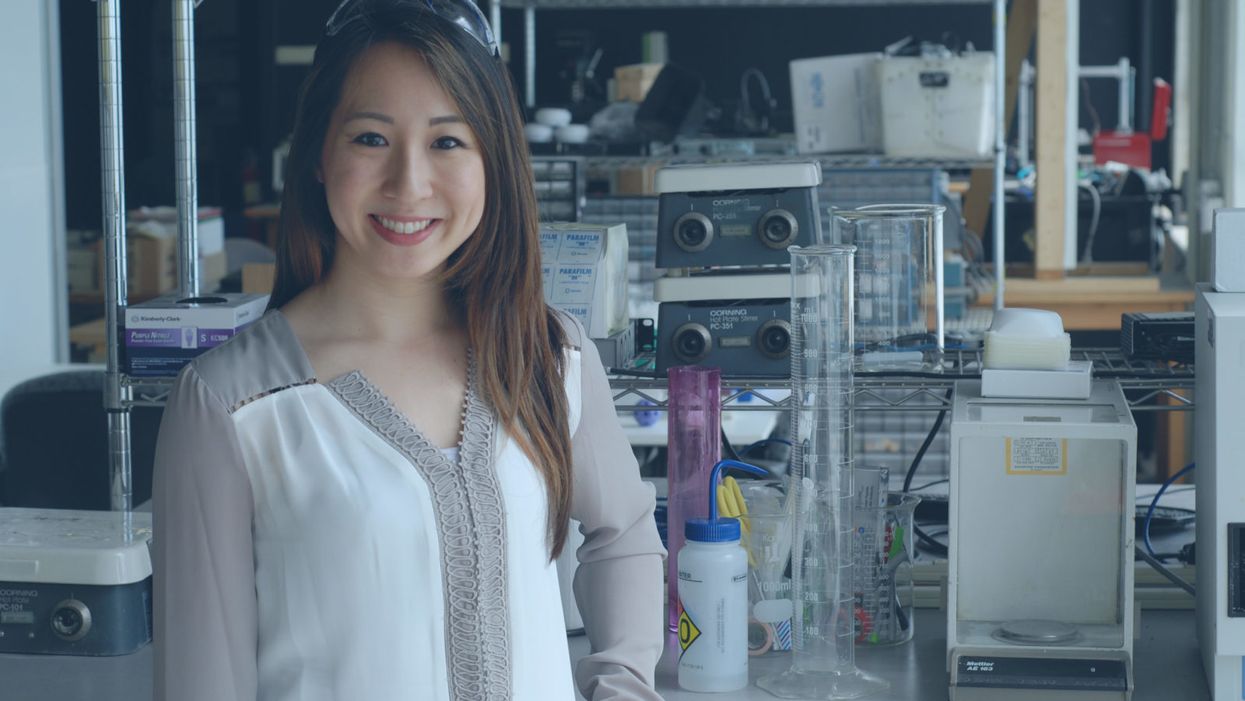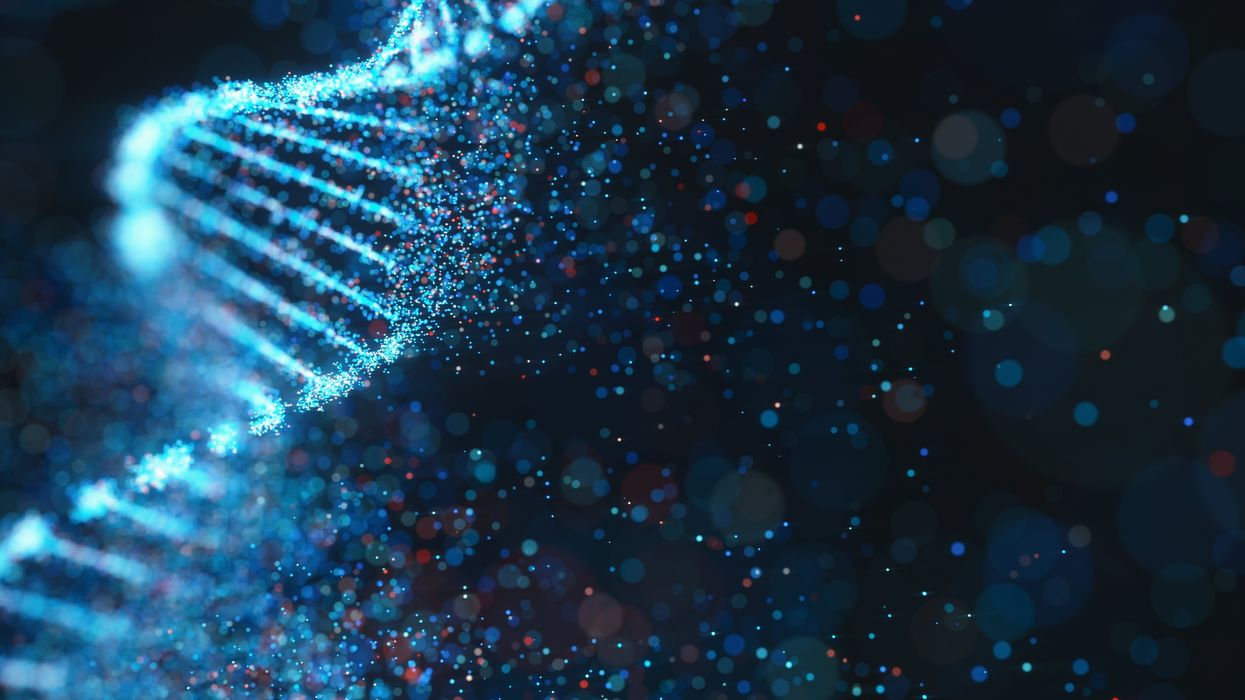With Mentors, Models, and #MeToo, Femtech Comes of Age

Femtech entrepreneur Stacy Chin attributes her success to backing by mentors and learning how to navigate conversations about personal products in a businesslike manner.
In her quest to become a tech entrepreneur, Stacy Chin has been an ace at tackling thorny intellectual challenges, mastering everything from molecules to manufacturing.
These mostly female leaders of firms with products addressing women's health concerns are winning in a big way, raising about $1.1 billion in startup funds over the past few years.
But the 28-year-old founder of HydroGlyde Coatings, based in Worcester, Mass., admitted to being momentarily stumped recently when pitching her product – a new kind of self-lubricating condom – to venture capitalists.
"Being a young female scientist and going into that sexual healthcare space, it was definitely a little bit challenging to learn how to navigate during presentations and pitches when there were a lot of older males in the audience," said Chin, whose product is of special appeal to older women suffering from vaginal dryness. "I eventually figured it out, but it wasn't easy."
Chin is at the vanguard of a new generation of "femtech" entrepreneurs heading companies with names like LOLA Tampons, Prelude Fertility, and Peach, bringing once-taboo topics like menstruation, ovulation, incontinence, breastfeeding, pelvic pain and, yes, female sexual pleasure to the highest chambers of finance. These mostly female leaders of firms with products addressing women's health concerns are winning in a big way, raising about $1.1 billion in startup funds over the past few years, according to the New York data analytics firm CB Insights.
"We are definitely at a watershed moment for femtech. But we need to remember that [it's] an overnight sensation that is decades in the making."
If the question is "Why now?", the answer may be that femtech leaders are benefiting from the current conversations around respect for women in the workplace, and long-term efforts to achieve gender equality in the male-dominated tech industry.
"We are definitely at a watershed moment for femtech," said Rachel Braun Scherl, a self-described "vaginepreneur" whose new book, "Orgasmic Leadership," profiles femtech leaders. "But we need to remember that femtech is an overnight sensation that is decades in the making."
In contrast with earlier and perhaps less successful generations of women in tech, these pioneers can point to mentors who are readily accessible, as well as more female VC and corporate heads they can directly address when making pitches. There's also a changing cultural landscape where sexual harassment is in the news and women who talk openly about sex in a business context can be taken seriously.
"Change is definitely in the air," said Kevin O'Sullivan, the president and CEO of Massachusetts Biomedical Initiatives, who sponsored Chin and has helped launch more than a hundred biotech companies in his home state since the 1980s.
Like a pinprick bursting a balloon, the #MeToo social movement and its focus on the prevalence of sexual harassment and assault is a factor in the success of femtech, some experts believe, provoking heightened awareness about the role of women in society -- including equal access to start-up capital.
"If such a difficult topic is being discussed in the open, that means more and more people are speaking out and are no longer afraid about sharing their own concerns," said Debbie Hart, president and CEO of BioNJ, a business trade group she founded in 1994. "That's empowering the whole women's movement."
The power of programs that allow young women to witness successful older women in leadership cannot be overstated.
Observers like Hart say that femtech's advent is also due to a payoff from longer-term investments in a slew of programs encouraging girls to pursue STEM careers and women to be hired as leaders, as well as changing social norms to allow female health to be part of the public discourse.
The power of programs that allow young women to witness successful older women in leadership cannot be overstated, according to Susan Scherreik of the Stillman School of Business at Seton Hall University in New Jersey.
"What I have found in entrepreneurship is that it's all about two things: role models and mentoring," said Scherreik, director of the university's Center for Entrepreneurial Studies.
One of Scherreik's top students, Madison Schott, is convinced that the availability of female mentors has been instrumental to her success and will remain so in her future. "It definitely is very encouraging," said Schott, who won the "Pirates Pitch" university-wide business start-up competition in April for an app she is developing that uses AI to guide readers to reliable news sources. "Woman to woman," she added, "you can be more open when you have questions or problems."

Programs that showcase successful females in leadership positions are beginning to bear fruit, inspiring a new generation of females in business, according to Susan Scherreik (at left), director of Seton Hall University's Center for Entrepreneurial Studies at the Stillman School of Business. Her student, Madison Schott (right), is the winner of a university-wide business start-up competition for an app she is developing.
While femtech entrepreneurs may be the beneficiaries of change, they also may be its agents. Scherl, the author, who has been working in the female healthcare sector for more than a decade, believes in persistence. In 2010, organizers of a major awards show banned a product she was marketing, Zestra Essential Arousal Oils*, from a gift bag for honorees. Two years ago, however, times changed and femtech prevailed. The company making goodie bags for Academy Awards nominees included another one of her products, Nuelle's Fiera, a $250 vibrator.
"We come from so many different perspectives when it comes to sex, whether it is cultural, religious, age-related, or even from a trauma, so we never have created a common language," Scherl said. "But we in femtech are making huge progress. We are not only selling products now, we are selling conversation, and we are selling a comfort with sexuality in all its complex forms."
[*Correction: Due to a reporting error, the product that was banned in 2010 was initially identified as Nuelle's Fiera, not Zestra Essential Arousal Oils. The article has been updated for accuracy. --Editor]
Gene Transfer Leads to Longer Life and Healthspan
In August, a study provided the first proof-of-principle that genetic material transferred from one species to another can increase both longevity and healthspan in the recipient animal.
The naked mole rat won’t win any beauty contests, but it could possibly win in the talent category. Its superpower: fighting the aging process to live several times longer than other animals its size, in a state of youthful vigor.
It’s believed that naked mole rats experience all the normal processes of wear and tear over their lifespan, but that they’re exceptionally good at repairing the damage from oxygen free radicals and the DNA errors that accumulate over time. Even though they possess genes that make them vulnerable to cancer, they rarely develop the disease, or any other age-related disease, for that matter. Naked mole rats are known to live for over 40 years without any signs of aging, whereas mice live on average about two years and are highly prone to cancer.
Now, these remarkable animals may be able to share their superpower with other species. In August, a study provided what may be the first proof-of-principle that genetic material transferred from one species can increase both longevity and healthspan in a recipient animal.
There are several theories to explain the naked mole rat’s longevity, but the one explored in the study, published in Nature, is based on the abundance of large-molecule high-molecular mass hyaluronic acid (HMM-HA).
A small molecule version of hyaluronic acid is commonly added to skin moisturizers and cosmetics that are marketed as ways to keep skin youthful, but this version, just applied to the skin, won’t have a dramatic anti-aging effect. The naked mole rat has an abundance of the much-larger molecule, HMM-HA, in the chemical-rich solution between cells throughout its body. But does the HMM-HA actually govern the extraordinary longevity and healthspan of the naked mole rat?
To answer this question, Dr. Vera Gorbunova, a professor of biology and oncology at the University of Rochester, and her team created a mouse model containing the naked mole rat gene hyaluronic acid synthase 2, or nmrHas2. It turned out that the mice receiving this gene during their early developmental stage also expressed HMM-HA.
The researchers found that the effects of the HMM-HA molecule in the mice were marked and diverse, exceeding the expectations of the study’s co-authors. High-molecular mass hyaluronic acid was more abundant in kidneys, muscles and other organs of the Has2 mice compared to control mice.
In addition, the altered mice had a much lower incidence of cancer. Seventy percent of the control mice eventually developed cancer, compared to only 57 percent of the altered mice, even after several techniques were used to induce the disease. The biggest difference occurred in the oldest mice, where the cancer incidence for the Has2 mice and the controls was 47 percent and 83 percent, respectively.
With regard to longevity, Has2 males increased their lifespan by more than 16 percent and the females added 9 percent. “Somehow the effect is much more pronounced in male mice, and we don’t have a perfect answer as to why,” says Dr. Gorbunova. Another improvement was in the healthspan of the altered mice: the number of years they spent in a state of relative youth. There’s a frailty index for mice, which includes body weight, mobility, grip strength, vision and hearing, in addition to overall conditions such as the health of the coat and body temperature. The Has2 mice scored lower in frailty than the controls by all measures. They also performed better in tests of locomotion and coordination, and in bone density.
Gorbunova’s results show that a gene artificially transferred from one species can have a beneficial effect on another species for longevity, something that had never been demonstrated before. This finding is “quite spectacular,” said Steven Austad, a biologist at the University of Alabama at Birmingham, who was not involved in the study.
Just as in lifespan, the effects in various organs and systems varied between the sexes, a common occurrence in longevity research, according to Austad, who authored the book Methuselah’s Zoo and specializes in the biological differences between species. “We have ten drugs that we can give to mice to make them live longer,” he says, “and all of them work better in one sex than in the other.” This suggests that more attention needs to be paid to the different effects of anti-aging strategies between the sexes, as well as gender differences in healthspan.
According to the study authors, the HMM-HA molecule delivered these benefits by reducing inflammation and senescence (cell dysfunction and death). The molecule also caused a variety of other benefits, including an upregulation of genes involved in the function of mitochondria, the powerhouses of the cells. These mechanisms are implicated in the aging process, and in human disease. In humans, virtually all noncommunicable diseases entail an acceleration of the aging process.
So, would the gene that creates HMM-HA have similar benefits for longevity in humans? “We think about these questions a lot,” Gorbunova says. “It’s been done by injections in certain patients, but it has a local effect in the treatment of organs affected by disease,” which could offer some benefits, she added.
“Mice are very short-lived and cancer-prone, and the effects are small,” says Steven Austad, a biologist at the University of Alabama at Birmingham. “But they did live longer and stay healthy longer, which is remarkable.”
As for a gene therapy to introduce the nmrHas2 gene into humans to obtain a global result, she’s skeptical because of the complexity involved. Gorbunova notes that there are potential dangers in introducing an animal gene into humans, such as immune responses or allergic reactions.
Austad is equally cautious about a gene therapy. “What this study says is that you can take something a species does well and transfer at least some of that into a new species. It opens up the way, but you may need to transfer six or eight or ten genes into a human” to get the large effect desired. Humans are much more complex and contain many more genes than mice, and all systems in a biological organism are intricately connected. One naked mole rat gene may not make a big difference when it interacts with human genes, metabolism and physiology.
Still, Austad thinks the possibilities are tantalizing. “Mice are very short-lived and cancer-prone, and the effects are small,” he says. “But they did live longer and stay healthy longer, which is remarkable.”
As for further research, says Austad, “The first place to look is the skin” to see if the nmrHas2 gene and the HMM-HA it produces can reduce the chance of cancer. Austad added that it would be straightforward to use the gene to try to prevent cancer in skin cells in a dish to see if it prevents cancer. It would not be hard to do. “We don’t know of any downsides to hyaluronic acid in skin, because it’s already used in skin products, and you could look at this fairly quickly.”
“Aging mechanisms evolved over a long time,” says Gorbunova, “so in aging there are multiple mechanisms working together that affect each other.” All of these processes could play a part and almost certainly differ from one species to the next.
“HMM-HA molecules are large, but we’re now looking for a small-molecule drug that would slow it’s breakdown,” she says. “And we’re looking for inhibitors, now being tested in mice, that would hinder the breakdown of hyaluronic acid.” Gorbunova has found a natural, plant-based product that acts as an inhibitor and could potentially be taken as a supplement. Ultimately, though, she thinks that drug development will be the safest and most effective approach to delivering HMM-HA for anti-aging.
A new study provides key insights in what causes Alzheimer's: a breakdown in the brain’s system for clearing waste.
In recent years, researchers of Alzheimer’s have made progress in figuring out the complex factors that lead to the disease. Yet, the root cause, or causes, of Alzheimer’s are still pretty much a mystery.
In fact, many people get Alzheimer’s even though they lack the gene variant we know can play a role in the disease. This is a critical knowledge gap for research to address because the vast majority of Alzheimer’s patients don’t have this variant.
A new study provides key insights into what’s causing the disease. The research, published in Nature Communications, points to a breakdown over time in the brain’s system for clearing waste, an issue that seems to happen in some people as they get older.
Michael Glickman, a biologist at Technion – Israel Institute of Technology, helped lead this research. I asked him to tell me about his approach to studying how this breakdown occurs in the brain, and how he tested a treatment that has potential to fix the problem at its earliest stages.
Dr. Michael Glickman is internationally renowned for his research on the ubiquitin-proteasome system (UPS), the brain's system for clearing the waste that is involved in diseases such as Huntington's, Alzheimer's, and Parkinson's. He is the head of the Lab for Protein Characterization in the Faculty of Biology at the Technion – Israel Institute of Technology. In the lab, Michael and his team focus on protein recycling and the ubiquitin-proteasome system, which protects against serious diseases like Alzheimer’s, Parkinson’s, cystic fibrosis, and diabetes. After earning his PhD at the University of California at Berkeley in 1994, Michael joined the Technion as a Senior Lecturer in 1998 and has served as a full professor since 2009.

Dr. Michael Glickman

